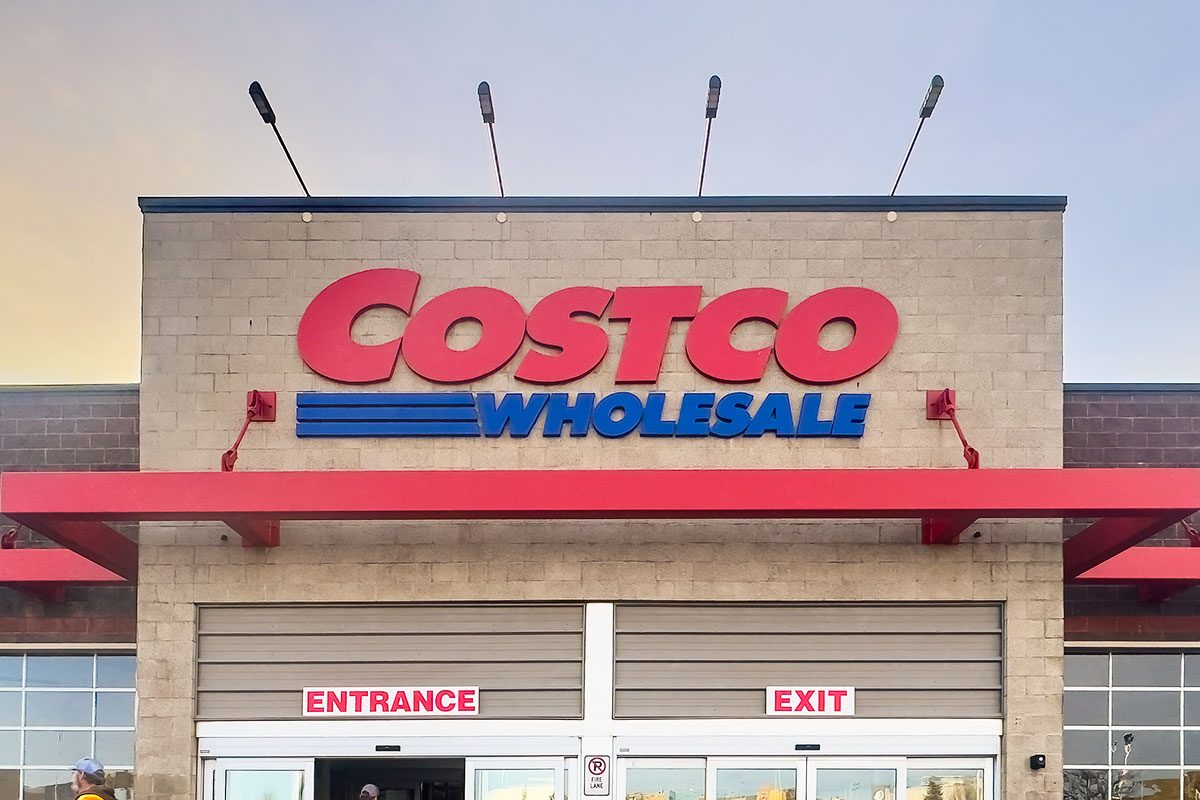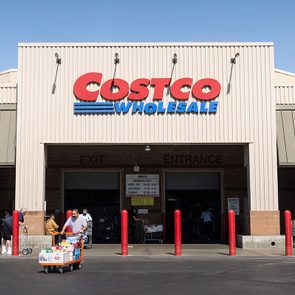It's hard to imagine not having club access!

These Are the Only 3 U.S. States Without a Costco—Here’s Why

In the United States alone, there are 624 Costco locations, and more are opening every year. That’s a lot of warehouses serving up $4.99 rotiserrie chickens, handing out free samples and installing new tires, among other things. However, despite that impressive number of locations, there are actually three states that don’t have any Costcos at all.
If you’re a Costco loyalist, the very idea of not having a warehouse in your state might make you shudder. Where else would you fill your car up with gas on the cheap? Or treat yourself to a $1.50 hot dog combo? Costco is a like a second home to its members.
So why, pray tell, would Costco choose not to set up shop in three select states? Well, the answer is a bit nuanced, so let’s get into it.
Get Reader’s Digest’s Read Up newsletter for more shopping, humor, cleaning, travel, tech and fun facts all week long.
How does Costco decide on locations for warehouses?
Opening any type of retail location has to meet some essential criteria so that the company can make money back on the investment. These typically include: strong population density, high median income, low delivery costs and nearby existing infrastructure.
However, for a warehouse club like Costco, the need to hit these criteria is even more essential, according to Marty Bauer, an e-commerce expert at Omnisend.
“You’re asking people to pay to shop there, buy in bulk and drive to the outskirts of town—that’s a narrower customer base than, say, a grocery chain or pharmacy,” Bauer says. “So while most retailers look for foot traffic and visibility, warehouse clubs prioritize things like vehicle access and parking space, not to mention buying-power density.”
Which three states don’t have a Costco?

They may not be the ones that come to mind. The three states that don’t have any Costco locations within their borders are Rhode Island, West Virginia and Wyoming.
“All of three of these states have low population density, which makes it difficult to justify the large footprint and rapid inventory turnover that Costco needs,” Bauer says. “But the bigger issue here is likely profitability per square foot and logistical efficiency. Costco’s business model relies on high-volume, fast-moving inventory in areas with dense foot traffic. If the numbers don’t add up, whether due to income demographics, road access or simply not enough local demand for bulk shopping, they’ll skip it.”
Is there a possibility these states might get their own Costco soon?
During Costco’s third-quarter earnings call with investors, CEO Ron Vachris said that the company’s expectation is to open 27 new warehouses in 2025, which includes new outposts in Florida, Texas, Washington and Nevada this summer. However, Bauer thinks it’s unlikely that Rhode Island, West Virginia or Wyoming will be the recipient of one of these new stores anytime soon.
“I’d say it’s possible, but unlikely unless they test a smaller-format warehouse or find some logistical advantage, like piggybacking off a nearby distribution center in another state,” he says.
That’s because Bauer believes Costco’s absence from these states boils down to intentional restraint. “Costco is known for disciplined growth and has passed on plenty of ‘obvious’ markets that didn’t meet their tight margins,” he says. “So if they haven’t moved in by now, it’s probably because the data keeps telling them not to.”
How can residents of these states shop at Costco?
All is not lost for residents of Rhode Island, West Virginia and Wyoming. For Rhode Island residents, there’s a Costco location in Sharon, Massachusetts, that’s roughly 40 minutes from Providence.
Wheeling, West Virginia, which sits in the state’s northern panhandle, is approximately an hour from its closest Costco in Pittsburgh, Pennsylvania.
And residents of Cheyenne, Wyoming? Well, they’re about 45 minutes from a Costco warehouse in Timnath, Colorado. (We know, we know, Wyoming is a big state, and Timnath isn’t accessible to all its residents, but it’s better than nothing!)
Then there’s always Costco.com. We suspect residents of these states are big online shoppers, as even online giant Amazon recently took notice.
RELATED:
- This Is the Best Deal in Costco’s Food Court—And You Won’t Believe How Little It Costs!
- Brand-New Costco Foods You’ll Definitely Want to Add to Your Shopping List This Summer
- Here’s Why You Should Never Buy Kirkland Ground Beef at Costco
About the expert
|
Why trust us
At Reader’s Digest, we’re committed to producing high-quality content by writers with expertise and experience in their field in consultation with relevant, qualified experts. We rely on reputable primary sources, including government and professional organizations and academic institutions as well as our writers’ personal experiences where appropriate. We verify all facts and data, back them with credible sourcing and revisit them over time to ensure they remain accurate and up to date. Read more about our team, our contributors and our editorial policies.





















